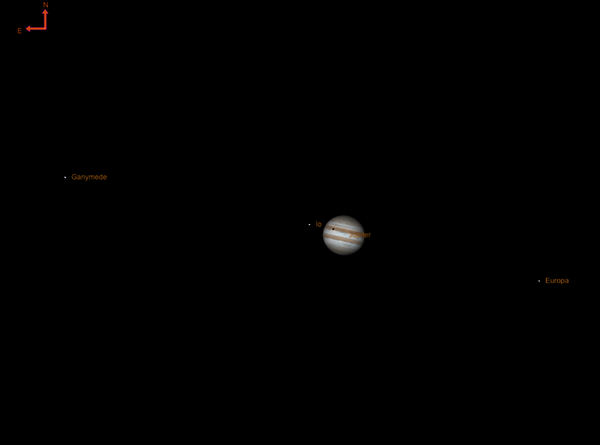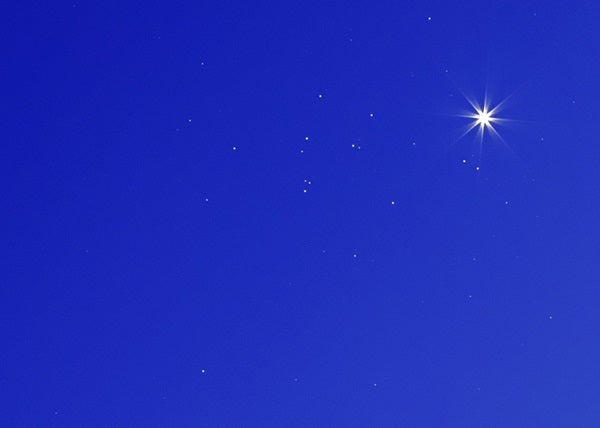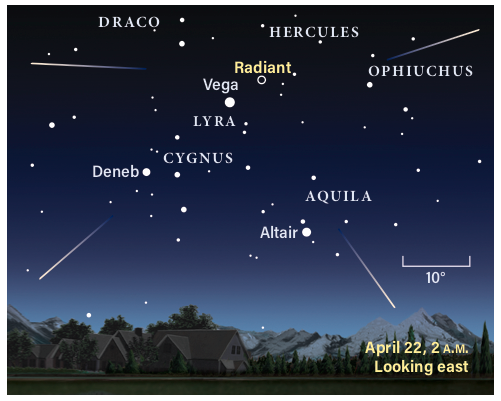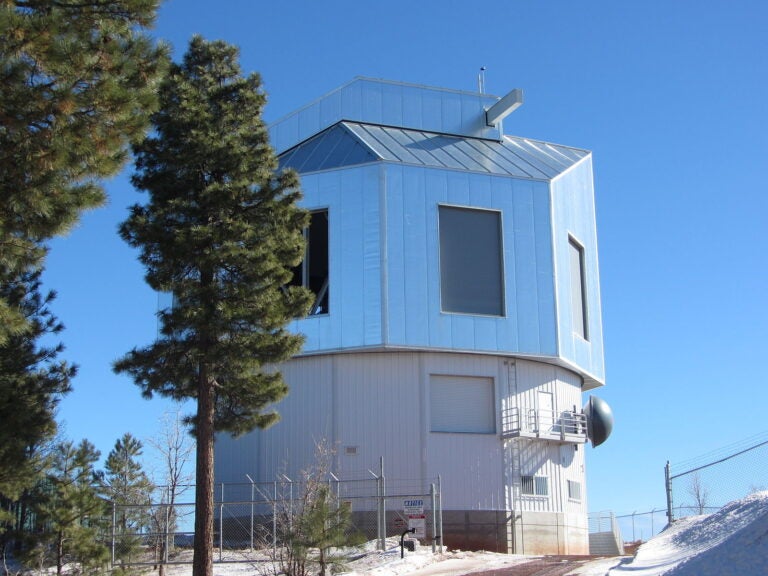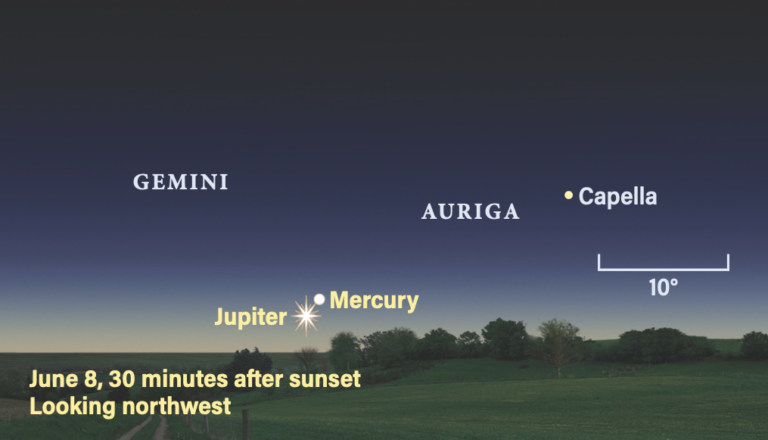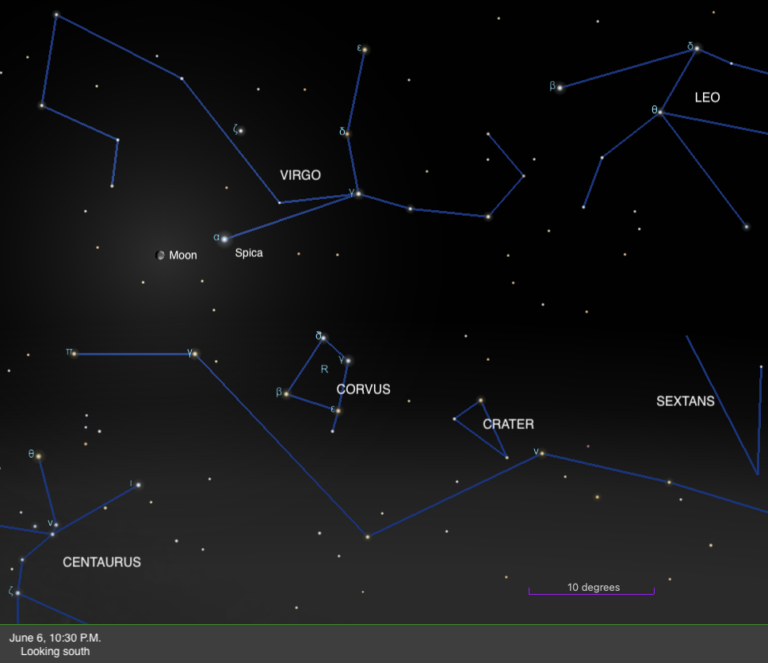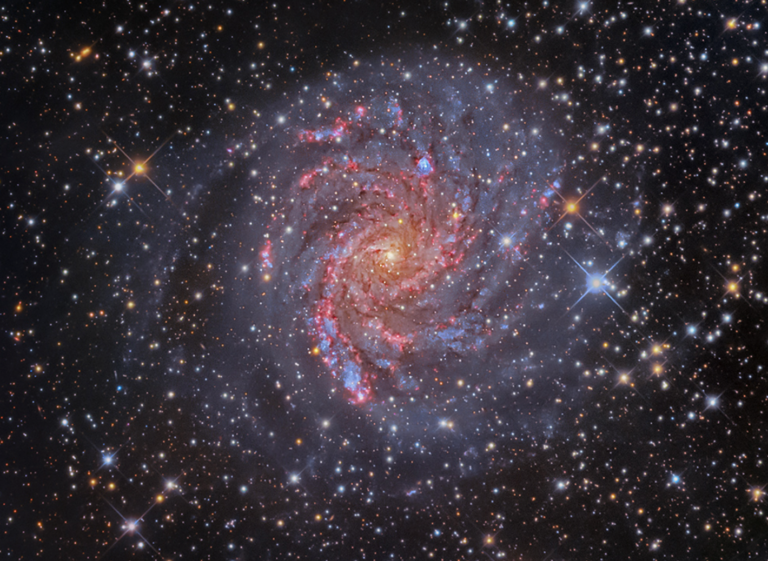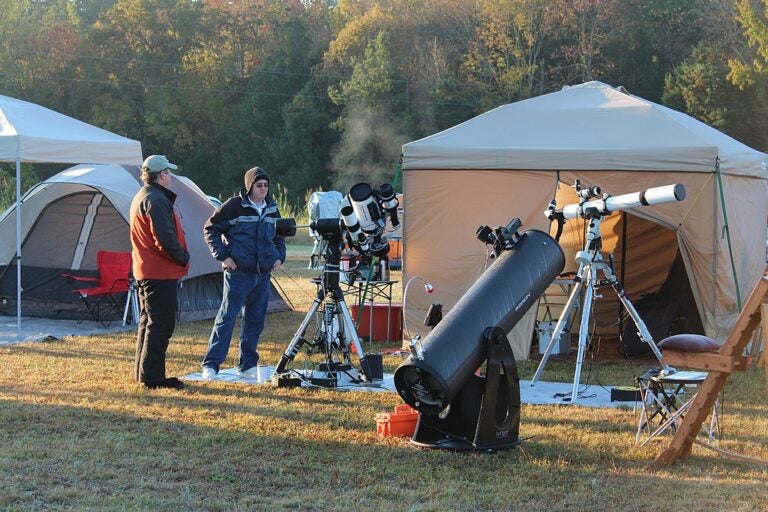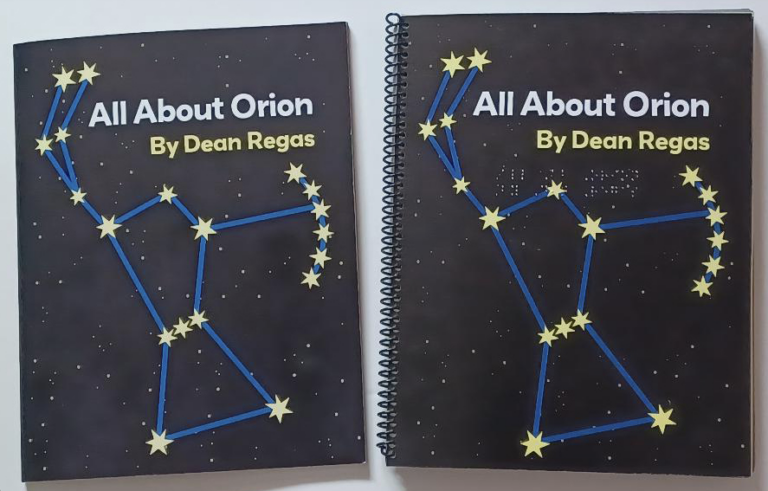Venus passes 10° north of Aldebaran at 4 P.M. EDT today. Step outside just after sunset to spot the planet shining at magnitude –4.7 near the brightest luminary in Taurus the Bull. Although Venus appears as a crescent — just 36 percent illuminated — it is also growing in apparent size and is now 32″ across. Keep checking the post-sunset sky each night this month to see the trend continue, as Venus slims down even further to 25 percent illumination but grows to 39″ across by the end of April.
Once full darkness begins to set in, pull out binoculars or a small scope and swing 6.5° due south of Venus to spot 4 Vesta, the main belt’s third-largest object. Tonight, it floats just 2.5° northwest of NGC 1647, a scattered open star cluster about 150 million years old.
Today also marks the 50th anniversary of the successful splashdown of Apollo 13 in the South Pacific Ocean.
Saturday, April 18
Venus continues its trek through Taurus tonight. Hop to the next constellation over, Perseus, which lies to the northwest, and search out M34 (NGC 1039). This bright open cluster of stars is about 5° west of Algol (Beta [β] Persei). To find it, draw a line between Venus and Algol, then continue along that line about a quarter of its length farther. Under dark conditions, you may be able to spot M34 unaided.
With no Moon in the sky, pull out your telescope to find the fainter M76 (NGC 650/1), also known as the Little Dumbbell Nebula. This magnitude 10 planetary nebula floats 12° northwest of M34, about halfway on a line drawn between Algol and Caph (Beta Cassiopeiae).
Sunday, April 19
The waning Moon passes 4° south of Neptune at 3 A.M. EDT. The pair rises about an hour before sunrise, so you’ll only have a limited time to catch them — still standing less than 5° apart — low on the horizon in the east before the sky grows too bright. Through a telescope, Neptune’s disk appears 2″ across.
Today also kicks off International Dark Sky Week, which runs April 19–26. This year, the International Dark-Sky Association is encouraging homebound families to look up together and reconnect with the night sky through a full schedule of presentations and more. You can find the schedule at https://idsw.darksky.org.
Io’s shadow begins to cross the face of Jupiter at 4:43 A.M. EDT this morning, appearing on the planet’s northeastern limb. The moon itself crosses onto Jupiter’s disk at 6 A.M. EDT. The progressing sunrise prematurely ends the show for those watching from the East Coast, but observers in the western half of the U.S. can continue to track the moon and its shadow. All three additional Galilean moons are also on display this morning: Ganymede to Jupiter’s northeast, and Europa and Callisto the planet’s southwest.
Our own Moon reaches apogee at 3 P.M. EDT today. At that time, our satellite will be 252,564 miles (406,462 kilometers) from Earth.
M44 (NGC 2632), also known as Praesepe the Manger or the Beehive Cluster, is a great object to search out in the western sky after sunset. Slowly sinking toward the horizon, this large cluster of more than 200 stars has a visual magnitude around 3. Many observers report that it appears as a blurry patch of brightness to the unaided eye; with binoculars or a telescope, its myriad bright stars burst into view. Although Cancer the Crab, in which M44 resides, is a fainter constellation, try drawing a line between the bright stars Regulus in Leo and Pollux in Gemini. M44 is roughly two-thirds of the way on the line between these two bright stars.
The Lyrid meteor shower peaks under ideal conditions this morning in a moonless sky. The shower’s radiant sits slightly southwest of the bright star Vega, located high in the east in the hours before sunrise. This year’s shower is expected to produce a zenithal hourly rate of 15 to 20 meteors per hour, particularly during the peak. Lower rates will occur earlier, with the radiant lower in the sky.
Shower meteors may appear anywhere in the sky, but the best place to watch is an area about 45° high away from the radiant in Lyra.
New Moon occurs at 10:26 P.M. EDT tonight.
April 22 is also Earth Day; this year, NASA is celebrating the holiday all week with virtual events that include podcasts, lectures, and Q&As.
Thursday, April 23
The Big Dipper starts the night high above the northeast horizon for those in the northern U.S. This famous asterism consists of eight stars — the second star from the end of the handle is an easily split double: Mizar and Alcor. Test your vision to see whether you can spot fainter (magnitude 4) Alcor a mere 11′ northeast of magnitude 2.2 Mizar. If you aren’t able to view the double unaided, binoculars or a small scope will certainly split the pair.
Friday, April 24
Mars glows brightly near 4th-magnitude Iota (ι) Capricorni this morning before sunrise. The magnitude 0.5 Red Planet stands nearly 20° high an hour before sunrise, far outshining the fainter luminary. Scan due west to find Saturn and Jupiter nearby; the giant planets are just 5° apart and glowing at magnitudes 0.6 and –2.4, respectively. Mars will continue to streak east as April changes over to May, while the more distant Saturn and Jupiter remain roughly stationary against the background stars.

Our exclusive Sky Guide 2020 is now available! This free downloadable pamphlet contains a month-by-month rundown of 2020’s biggest celestial events, from Mars’ best opposition in years to the return of totality in South America this December. Check out Astronomy’s Sky Guide 2020 now!


